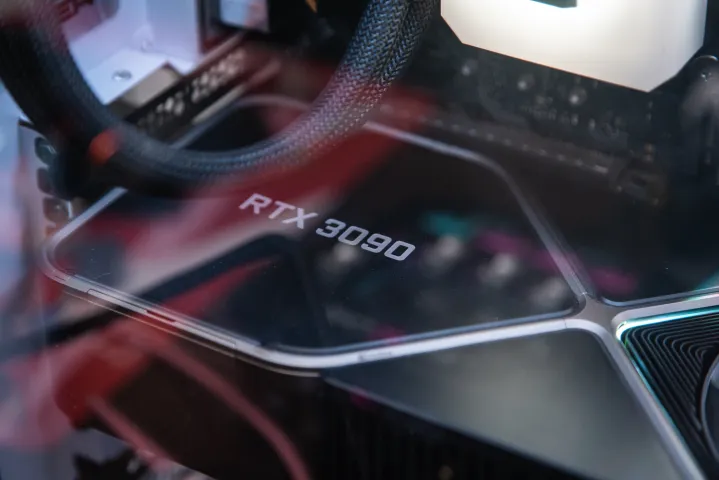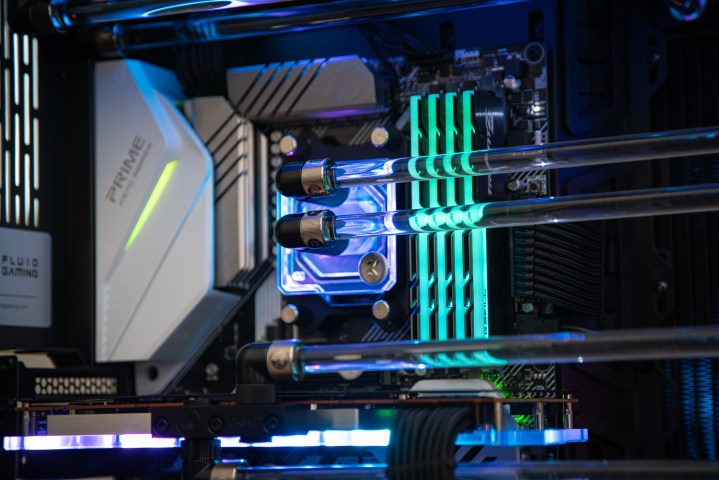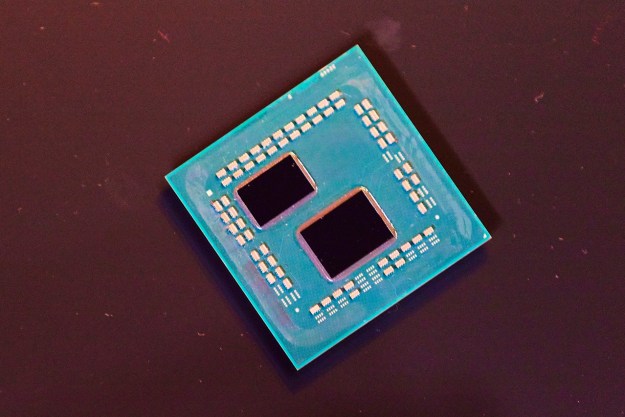For decades, PC enthusiasts have run around their systems looking for and fixing GPU and CPU bottlenecks. The reason why is simple: A bottleneck might cut you off from extra performance in your PC.
That’s why it’s important to understand what a bottleneck is, how to find one, and how to avoid them in the future.
What is a PC bottleneck?

A bottleneck in your PC happens when one component limits the performance of another component. It’s a simple premise, but bottlenecks in a real PC are complex and multi-layered. Every PC has bottlenecks at several points, oftentimes within each component.
For PC gamers, the main concern is the bottleneck that can occur between the CPU and GPU. These two components rely on each other to render the final image you see on screen, and a bottleneck occurs when one is holding up the other.
For easy numbers, imagine that the CPU and GPU each have 1/120th of a second to perform their tasks. That would mean you have a frame every 1/60th of a second (or 60 frames per second). If GPU can keep up with that pace, but your CPU can’t, then you have a CPU bottleneck. Similarly, if your CPU is sending instructions at a breakneck pace, but your GPU struggles to render the frame in time, you have a GPU bottleneck.
A good real-world example of this comes from our own benchmarks. At 4K with an RTX 3090, we recorded almost identical results between the 10-core Intel Core i9-10900K and 16-core Core i9-12900K in Forza Horizon 4 — just a 1.2% difference in our average frame rate. At 1080p, however, these processors show a much more significant 15.6% difference in average frame rate.

That’s an example of a GPU bottleneck. At 4K, the graphics card is running as fast as it can, so it doesn’t matter how powerful the processor is — it will always be limited by the GPU. By reducing the resolution to 1080p, and in turn the load on the graphics card, the processors show more differences because they’re no longer limited by the GPU.
That’s why our processor reviews show results at 1080p, even with $800 CPUs like the Core i9-12900KS. Similarly, that’s why we pair budget GPUs like the RTX 3050 with expensive CPUs like the Ryzen 9 5950X. It’s all in an effort to avoid bottlenecks.
How do you find a bottleneck in your PC?

Finding a bottleneck in your PC is easy. All you need to do is monitor your CPU and GPU usage, and from that, you can infer if you have a bottleneck in your system. I recommend downloading MSI Afterburner (which is also useful for GPU overclocking) to save a detailed log on your CPU and GPU usage, but you can just as easily monitor these metrics while playing a game with tools like Nvidia’s GeForce Experience overlay.
If your CPU usage is much higher than your GPU usage, that indicates a CPU bottleneck, and vice versa. Anything below 50% utilization is considered low, 50% to 70% is normal, and 70% and up is high. These are just ballpark figures, so don’t take them as a proof of a bottleneck. If you see 60% GPU utilization and 80% CPU utilization in a game, for example, you may have a slight CPU bottleneck, but it’s not something you should worry about.

To log your utilization, download and install MSI Afterburner. Open it up and follow these steps:
- Click on Settings.
- Select the Monitoring tab.
- Under Active hardware monitoring graphs, select GPU usage and CPU usage. You can include other metrics in your log file if you’d like, as well.
- Under Hardware monitoring history logging properties, check the Log history to file box.
- (Optional) Under Global monitor hotkeys, set hotkeys to start and stop logging, as well as clear your history.
- Click Apply.
With MSI Afterburner set up, launch into some games you normally play. Clear the history of the log by right-clicking on the monitor and selecting Clear history, and then select Log history to file. Alternatively, you can do this with hotkeys if you set them up in the previous step.
Play the game for about 30 minutes and then open your log file. By default, you’ll find it here: C:/Program Files (x86)/MSI Afterburner/HardwareMonitoring.hml. Afterburner stores multiple logs in this file, so you’ll need to select the one you want to view.
Ideally, you’ll repeat this process with several games to stress your components differently. If you see a large gap between usage — say 90% CPU utilization and 50% GPU utilization — you have a bottleneck.
I don’t recommend using one of the several bottleneck calculators you can find online. These calculators don’t represent real-world performance, and they’re not relevant to finding a bottleneck with your specific configuration of hardware. The best way to find out is to check yourself.
How to fix and avoid a PC bottleneck

The best way to fix a PC bottleneck is to upgrade your hardware. If you’ve been sitting on an Intel Core i7-4770K, and you have a modern GPU, you’ll want to pick up one of the best gaming processors. Similarly, if you have a modern CPU with a ton of cores but a weaker video card, you’ll want to upgrade with one of the best graphics cards.
Money isn’t unlimited, though, so there are a few things you can do to lessen the blow of a bottleneck. One option is to overclock your weaker component to squeeze some extra performance out of it. You can also tweak your in-game settings or reduce your resolution to lessen a GPU bottleneck.
To avoid a bottleneck, make sure to balance your hardware. With modern GPUs and CPUs, this should be fairly obvious. If you pair an RTX 3080 with a Core i3-8100, for example, you’re going to run into a CPU bottleneck. The goal with bottlenecks is to avoid wide gaps where you’re pairing a high-end, recent component with a low-end one that’s several generations old.

Not all bottlenecks are a cause for concern, either. For instance, you’ll always have a GPU bottleneck when playing at 4K, but that’s just because 4K is extremely demanding for modern graphics cards. The only time when a PC bottleneck is a problem is when you’re getting much lower performance out of a component than you should be.
Don’t worry too much about bottlenecks

Although the idea of limiting your hardware with a bottleneck is frightening, you shouldn’t pay too much attention to it. Even a PC with the latest, most expensive hardware will have several bottlenecks throughout it. The most important time to look into bottlenecks is when you’re about to upgrade your PC to avoid spending too much money on a component your machine can’t take full advantage of.
I’ve focused on the CPU/GPU dynamic in gaming PCs here, because that’s where you’ll see the clearest signs of a bottleneck. In some cases, you may see them elsewhere in your machine. If you’re using a memory-intensive application like Adobe Premiere Pro, for example, a high-core processor may be bottlenecked by not having enough RAM.
The best advice is to just keep bottlenecks in mind. They can help inform upgrade decisions, but you shouldn’t seek them out if you’re happy with the performance of your PC.
Editors' Recommendations
- A friendly reminder that your PC power supply will eventually destroy itself
- A new standard is raising the bar for HDR on PC
- Blue Screen of Death: What it means and what to do if you get one
- Delidding your CPU: What it is and why you should do it
- You’ll never guess what this YouTuber built into a PC this time




